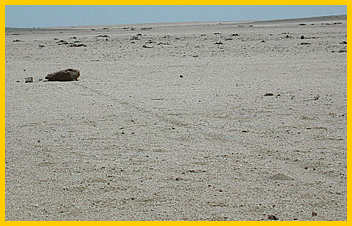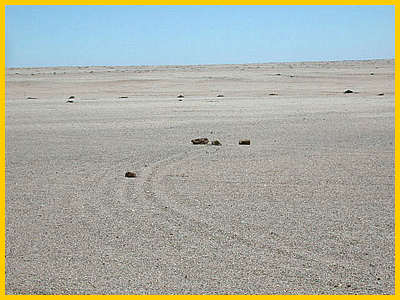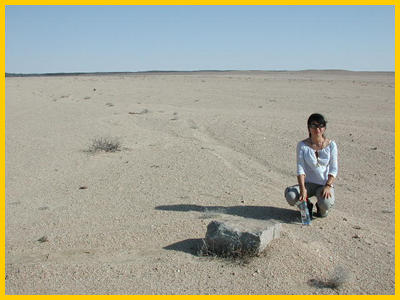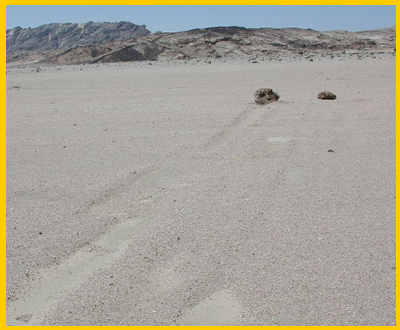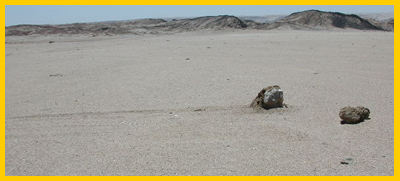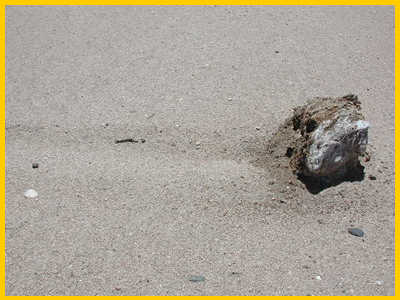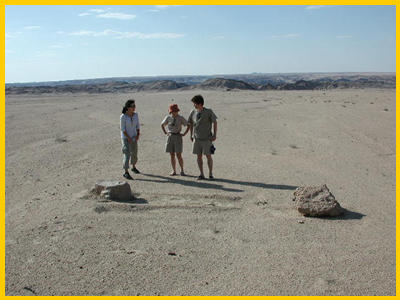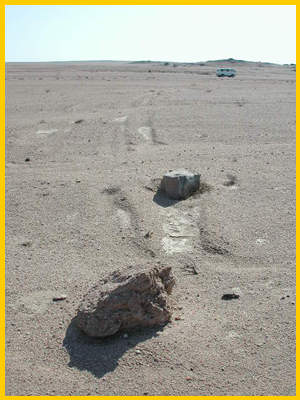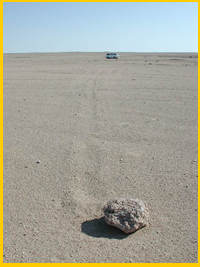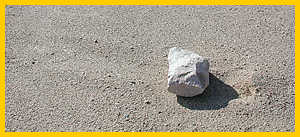On the plains of the oldest desert
in the world,
the Namib, you may sometimes see strange grooves in the sand.
Some are straight, some curved.
Close together they run in parallel, further apart in different directions.
Some even travel slightly uphill.
These are tracks made by moving
rocks.
No one has ever seen them move,
but the evidence is unmistakable.
In the photo above, please note
the clear difference between the track made by the boulder to the left of
it and a depression made by water behind.
Various sized rocks leave a similar
track
Note the earth pushed up in front
of the rock.
It must take considerable force to do this.
This one seems to be
reversing on it's track.
This rock is lying
outside it's track.
Why?
Note the grooves in the distance
made by these two.
The smaller rock seems to be travelling back
to where it came from,
but in a slightly different direction,
making a new groove.
What makes these rocks move?
Wind? Mud? Water? Ice? Lay lines? Magnetism?
In our age of science and exploration,
this remains one of the few mysteries on earth!


